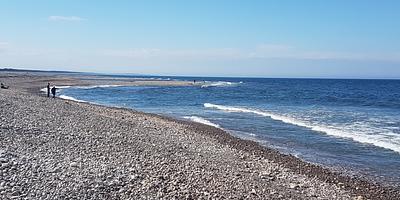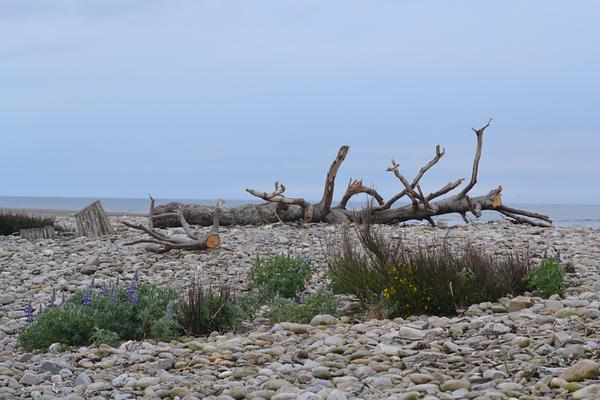
SHINGLE BEACHES
Shingle beaches are made up of pebbles, stones and other small rocks. They occur on exposed coasts where waves have enough energy to shift rocks along the coast.
Despite its proximity to the sea, the loosley packed pebbles means the majority of this habitat is actually very porous and dry. The constant shifting of rocks also means very little soil builds up amongst the rocks, making it an incredibly harsh environment for species to survive...but some do!
FORMATION
The rocks that accumulate on the shore can come from a variety of sources. They can be; deposited by glaciers during the Pleistocene era; transported by rivers from mountainsides; or washed along the coast from rocky cliffs and platforms.
Whilst in water, the edges of shingle become rounded and smooth due to wave action and rolling along the seabed. The pebbles then get washed up the beach by waves and deposited on the shore.
Larger pieces of rock are deposited further from the water and at higher elevations than smaller pieces, leading to a gradient of different sized pebbles up the shore.
INHABITANTS

Plants able to grow in these tough conditions have adaptations such as succulent stems and leaves, plus tap roots that help anchor them amongst the shingle. Species include:
- Sea-holly (Eryngium maritimum) and yellow horned-poppy (Glaucium flavum) – specialists which are rarely found in any other habitat.
- Sea-kale (Crambe maritima) with its waxy, cabbage-like leaves, and big white dome flower heads, grows in large clumps to heights of 1m.
- Sea pea (Lathyrus japonicus) doesn’t grow as high but spreads out to form loose mats across the surface of the shingle. The plant produces beautiful purple-blue flowers in Summertime and its shoot and seeds are a favourite food of pigeons and doves.
Vegetation found growing on stabilised shingle inland includes grassland, heathland, scrub and woodland.
In remote places, shingle beaches are ideal places for birds such as species of gull and tern to nest.
Species of invertebrates also exist amongst the pebbles including the jumping spider (Heliophanus auratus) and the scaly cricket (Pseudomogoplistes vicentae).
LOCALISED THREATS
- Storms – adverse weather causes the movement and sometimes the removal of shingle from shores. Storms are increasing in intensity and frequency due to climate change.
- Disturbance – Walkers or fishermen can disturb bird colonies if they get too close.
- Trampling – Some plants are very vulnerable to moving shingle or direct damage caused by walking over the shore.
